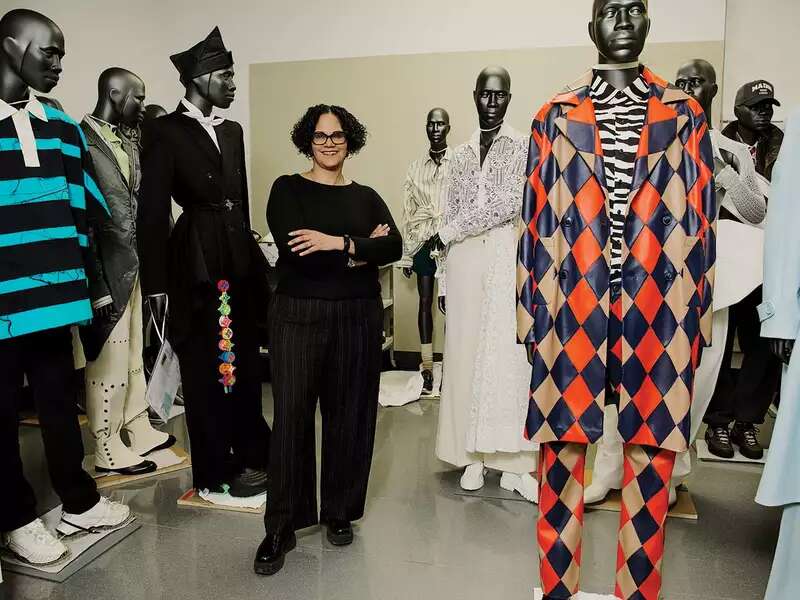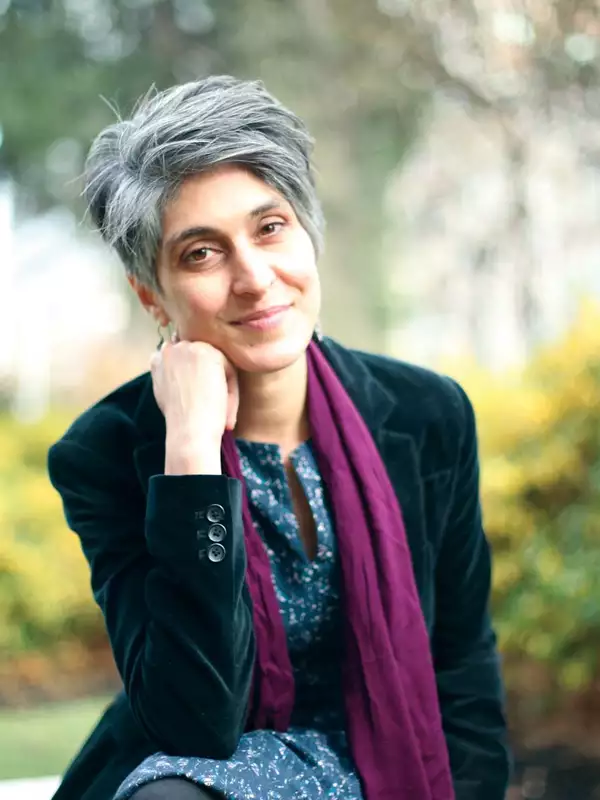
The Barnard professor brings her research on Black dandyism to the Met Costume Institute

For months now, images of Iranian protesters have proliferated in the media. They show women removing and burning their headscarves, cutting their hair, and taking to the streets en masse as they resist armed security forces. These demonstrations erupted in Iran last September over the death of 22-year-old Mahsa Amini (also known by her Kurdish name, Jina) in police custody after she was arrested by the so-called morality police for allegedly violating the country’s compulsory hijab laws.
While this current movement was spurred by Amini’s death, it has roots in earlier protests, including the 1979 women’s uprising in Tehran on International Women’s Day. Manijeh Moradian, assistant professor of women’s, gender, and sexuality studies, examines this history in her new book, This Flame Within: Iranian Revolutionaries in the United States. Through archival research and interviews, Moradian takes a closer look at the Iranian student diaspora in the United States in the 1960s and 1970s through a feminist lens.
Moradian, who holds a Ph.D. in American studies from NYU and an MFA in creative nonfiction from Hunter College, formerly served as the co-director of the Association of Iranian American Writers. She spoke with Barnard Magazine in late November about the current movement in Iran and how the 1979 protests informed it.
Catch us up: How did the protests spread?
The protests began in the Kurdish Iranian city of Saqqez, Jina’s hometown, and spread to every city and even small towns. It was there that the Kurdish slogan “Jin, Jian, Azadi” or “Women, Life, Freedom” was chanted over Jina’s grave by her relatives and community. The outrage over the destruction of a woman’s life over the rigidities of “proper” hijab swept the nation because every woman in Iran knows the daily experience of vulnerability to state surveillance, control, humiliation, and punishment.
Men joined in, no longer willing to be silent or complicit with legal forms of women’s oppression. The protests crossed class lines and mobilized Iranians from all ethnic and religious backgrounds. Nightly battles between unarmed protesters and heavily armed security forces raged, and different sectors of society organized. Bazaar merchants closed shops in several cities, teachers went on strike, university students staged mass protests and shut down classes.
And where do the demonstrations stand now?
The government has killed over 400 people, including 50 children. There are over 16,000 protesters and dissidents in prison, including journalists, and these are overwhelmingly young people. Several have been beaten to death in prison, and now the government is carrying out executions of prisoners sentenced to death. The Islamic Republic has nothing left but violence — they have a core of stalwart supporters, but they have also alienated many religiously devout people, including some clerics. You can see images of religious people joining the protests and hear people arguing that the government is abusing the people in the name of Islam and acting contrary to the values of Islam. So this is not a movement against religion. This is not a movement against hijab per se but against state-imposed hijab. Whether or not to wear hijab should be a decision made by women, not the state.
Iranian women have been challenging the hijab rule for nearly 40 years. What makes this movement particularly unique?
Actually, the first protests against compulsory hijab erupted in March 1979 — just a few weeks after the Shah left the country and Ayatollah Khomeini returned from his exile in Paris and before the establishment of the Islamic Republic. It wasn’t until 1983 that the government consolidated enough power to fully implement compulsory hijab.
While different groups of women continued to advocate for their rights — in education, in parliament, in court, and through everyday acts that defied the state’s efforts to control their bodies and lives — many years of activism yielded only small changes that often were undone as hardline politicians asserted power within the ruling circles. With the suppression of the pro-democracy, or “green,” movement in 2009-2010, the road to reform was blocked, and Iranian society entered a new phase of increased alienation and despair about the future.
What’s different now is that the current uprising began with and centers women’s demands for bodily autonomy and equal rights. The average age of protesters is 17, and they want to completely transform the conditions of their lives. They are not asking for reform but for an end to the Islamic Republic form of government.
How do you imagine the protestors’ demands evolving?
Compulsory hijab is an ideological pillar of the Islamic Republic, and, because of this, opposition to the state control over women’s bodies has become a lightning rod for a wide range of grievances against the government. As Audre Lorde famously said, “There is no such thing as a single-issue struggle because we do not live single-issue lives.”
This is not really a “women’s rights” movement in the sense of women asking for more rights from the existing state. The use of deadly violence against Jina symbolizes all of the violence and injustice of the government: its oppression of Kurds, Baluchis, and other minorities; its economic corruption and callousness towards poor and working-class people; the pollution of the environment; the decline in living standards; censorship; laws against dating and socializing among men and women; laws against queer people and the state regulation of trans people; and on and on. This has become a moment in which the disparate histories of marginalization and state repression faced by different groups is fueling a national uprising.
Your book chronicles the history of Iranian foreign students who joined a global movement against U.S. imperialism during the 1960s and 1970s. What are the lessons from that movement? And how do they carry over to today’s protests?
One key lesson from the 1979 experience is already unfolding in the current uprising in Iran, and that is the need for a capacious vision of freedom that centers the liberation of women and ethnic and religious minorities. Much of the Iranian left initially supported the Islamist leadership as a kind of authentic cultural representative of the people. The fact that so many Iranian students who returned from abroad to join the 1979 revolution did not really question compulsory hijab or the suppression of the Kurds by the new revolutionary government shows just how much they adhered to a hierarchical version of anti-imperialism that placed national sovereignty above issues of equal rights or democracy.
We are now seeing an emphasis on exactly those issues that were deemed secondary 43 years ago. This historical arc helps underscore the significance of the current revolutionary desires.
Do you see this as a tipping point in Iranian culture and politics?
Iranian society has changed irrevocably. Not only are women openly and brazenly defying compulsory hijab every day en masse, but the fear that kept people in line is gone. Young people have risked everything to try to change the direction of their society. What has already changed is the culture — the way women see themselves and each other and how women and men are transforming their ways of interacting.
Photo by Tom Stoelker